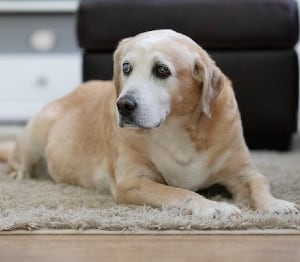We're an affiliate We hope you love the products we recommend! Just so you know, we may collect a share of sales or other compensation from the links on this page.
Contents
Tips on How to Train an Older Male Dog:
Learning how to potty train an older male dog can be a challenging task, but it is not impossible. Many pet owners find themselves in a situation where they have to deal with an older male dog that has not been potty trained. This can be due to various reasons such as adoption from a shelter or rescue, medical issues, or a change in environment. Whatever the reason may be, it is important to approach potty training an older male dog with patience, consistency, and positive reinforcement.
In this article, we will provide you with a comprehensive guide on how to potty train an older male dog effectively. We will cover everything from identifying the problem to creating a potty training routine that works for you and your furry friend. So, let’s get started.
Identifying the Problem
Before you start potty training an older male dog, it is important to identify the problem. Is your dog not potty trained at all or is he partially trained? Does he have any medical conditions that may be causing him to have accidents? Is he anxious or stressed? These are some of the questions you need to ask yourself before starting the potty training process.
Once you have identified the problem, you can start working on a solution. If your dog is not potty trained at all, you will need to start from scratch. If he is partially trained, you can work on improving his existing training. If your dog has a medical condition, you may need to consult your veterinarian for advice. And if your dog is anxious or stressed, you may need to work on reducing his stress levels before starting the potty training process.
Creating a Potty Training Routine
Creating a potty training routine is crucial for the success of the potty training process. You need to establish a routine that works for you and your dog. Here are some tips to help you create a potty training routine:
- Establish a feeding schedule: Feed your dog at the same time every day. This will help you predict when he will need to go potty.
- Establish a potty schedule: Take your dog out to potty at the same time every day. This will help him develop a routine and know when it’s time to go potty.
- Choose a potty spot: Choose a specific spot where you want your dog to go potty. This will help him associate that spot with going potty.
- Reward your dog: When your dog goes potty in the designated spot, reward him with treats or praise. This will reinforce the behavior and encourage him to continue going potty in the designated spot.
- Use a cue word: Use a specific word or phrase such as “go potty” or “do your business” to signal to your dog that it’s time to go potty.
Common Potty Training Challenges
Potty training an older male dog can come with its own set of challenges. Here are some common challenges you may encounter during the potty training process:
- Accidents in the house: Accidents in the house are common during the potty training process. If your dog has an accident, clean it up immediately with an enzymatic cleaner to eliminate the odor.
- Resistance to going potty outside: If your dog is resistant to going potty outside, try to make the potty spot more appealing by adding toys or treats. You can also try using a longer leash to give your dog more freedom.
- Fear of going outside: If your dog is afraid of going outside, try to gradually desensitize him by taking him outside for short periods and gradually increasing the time.
- Marking behavior: Male dogs have a tendency to mark their territory by lifting their leg and urinating on objects. If your dog is exhibiting marking behavior, it is important to discourage it by interrupting the behavior and redirecting him to the designated potty spot.
- Inconsistency: Inconsistency can hinder the potty training process. Make sure everyone in the household is on the same page and following the same routine.
Frequently Asked Questions
- How long does it take to potty train an older male dog?
Potty training an older male dog can take anywhere from a few weeks to several months. It depends on the dog’s age, breed, personality, and consistency of the training.
- What should I do if my dog has an accident in the house?
If your dog has an accident in the house, clean it up immediately with an enzymatic cleaner to eliminate the odor. This will prevent your dog from going back to the same spot.
- Can I use pee pads for potty training?
While pee pads can be useful for potty training, they can also create confusion for the dog. It is important to gradually transition from pee pads to going potty outside.
- What should I do if my dog is resistant to going potty outside?
If your dog is resistant to going potty outside, try to make the potty spot more appealing by adding toys or treats. You can also try using a longer leash to give your dog more freedom.
You can do this
Potty training an older male dog can be a challenging process, but with patience, consistency, and positive reinforcement, it is possible. By identifying the problem, creating a potty training routine, and addressing common challenges, you can successfully potty train your furry friend. Remember to be patient, as every dog learns at their own pace. With time and effort, your dog will learn to go potty in the designated spot and become a well-trained companion.

